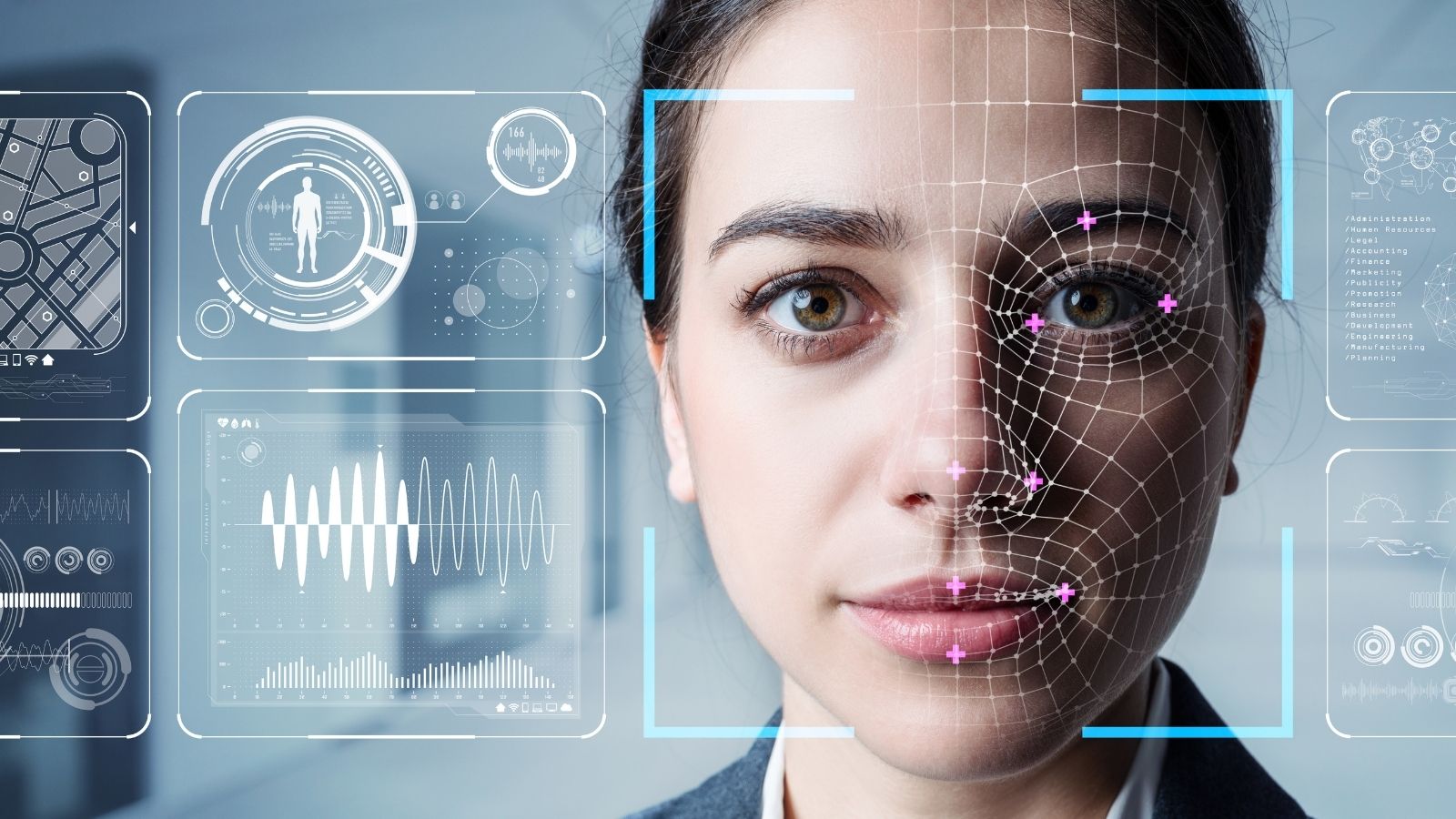The air travel sector's relationship with biometric-based digital IDs started in 2001 when U.S. legislation mandated biometrics for U.S. entry and exit. However, the COVID-19 pandemic has only accelerated the rate of adoption and new use cases are constantly evolving.
First implemented by government agencies in the wake of 9/11, the pandemic-era preference for contactless experiences has heightened biometric use for screening and check in at airports, on top of driving consumer acceptance of the technology. According to SITA, nearly three-quarters of airports now invest in biometric solutions and airline investment in biometric boarding is expected to rise 60% by 2024.
As the travel experience becomes increasingly integrated into the digital world, paper identification may soon be a thing of the past, just like paper air tickets.
The Biometrics Evolution

Biometrics are unique individual traits, like fingerprints or facial scans, that are used to verify an individual's identity . The way biometrics are used in airports is simple: in lieu of checking a print ticket or ID, those unique individual traits, like fingerprints or face scanners, are used to verify a passenger's identity without needing to reference any paperwork. Across the travelsphere, biometrics proclaim to offer a more secure, accurate option for screening travelers, and biometric technology, also greatly increases the efficiency of passenger screening. By using biometric screening in airports, airports can automate the process of verifying photo identification at the airport, reducing wait times for airport security and check-in.
Rise of Airport Biometrics
.jpg?width=370&name=Biometrics_Blog_24_03%20(1).jpg)
COVID-19 changed many facets of the travel experience, but the reduction of touchpoints in airlines and airports became a particular focus. Biometric scanners at airports quickly became a way to create a more hygienic, contactless passenger experience. By using biometric validation at check-in, airlines and airports could facilitate contactless boarding at a time when close proximity was unwelcome.
While biometric validation has yet to be deployed at every single airport around the globe, many of the world’s largest hubs, along with airlines themselves, have begun using the technology to make check-in and security screenings more efficient and secure. Biometrics, mechatronics and surveillance solution providers like Vision Box work with airports to operate biometric technology at over 100 airports around the globe, including New York City juggernaut John F Kennedy International Airport. China, which has been lauded by SITA for its digital transformation, intends to roll out biometric boarding gates at an impressive 86% of its airports within the next 2 years. Importantly, passenger acceptance of the technology has grown significantly since the pandemic’s onset. IATA’s 2021 passenger survey reported 73% of passengers were willing to share their biometric data to improve airport processes, compared to 46% in 2019.
Facial Recognition Means More Secure Airports
Government agencies like the Transportation Security Administration (TSA) and the United States Customers and Border Protection (CBP) began using biometrics at airports shortly after 9/11. As of May 2020, CBP had installed facial recognition technology, a method of biometric screening, at 27 U.S. airports for screening and security. In 2021, TSA launched a biometrics-based face scanning digital identity program in cooperation with Delta Air Lines. The technology’s adoption by governmental agencies is answering any doubts about its security and accuracy. In fact, facial recognition was recently found by the National Institute of Standards and Technology to be at least 99.5% accurate.
Biometric Airport Screening for Hassle-Free Travel
With adoption and acceptance of the technology growing, an entirely biometrics-based airport screening system is poised to eliminate the hassles flyers regularly face. By using biometrics at airports to make passengers’ faces their “digital IDs” for all checkpoints along their air journey, the “I forgot my passport at home” anxiety became a concern of the past.
Biometric Boarding with Your Digital Identity
In 2021, San Francisco International Airport and United Airlines began trialing a low-touch, biometric-enabled airport experience for domestic travelers on select United flights. Using SITA’s Smart Path technology, a state of the art self-service passenger processing solution, passengers used biometric facial scanners to check bags, pass through security and board their flights without ever showing a boarding pass or photo ID.
Benefits of Biometric Systems: Airport Efficiency
 Biometrics technology creates a more safe, seamless passenger experience, and holds significant benefits for efficiency. Vision-Box has noted it’s biometric boarding is capable of boarding 400 people in 20 minutes, half of the normal boarding time. A similar test at Los Angeles International Airport confirms this timing. As part of a $1.7 billion terminal expansion, newly installed biometric boarding gates reportedly boarded a flight in 20 minutes, less than half the time it takes with standard documents. Spirit Airlines piloted a biometric check-in ticket lobby at Chicago’s O’Hare International Airport and New York’s LaGuardia, with the capacity to automate bag drop. Equipped with biometric photo-matching, the self-bag drop system shows the average processing time is just 70 seconds per customer, reducing the time spent checking bags by 30%. In an effort to also cut waiting times and establish smoother processing, Korean Air recently launched biometric self-boarding via palm vein scanning for domestic flights in Seoul Gimpo Air. In lieu of presenting a boarding pass or interacting with airline staff, passengers verify their identity simply by holding out their hand.
Biometrics technology creates a more safe, seamless passenger experience, and holds significant benefits for efficiency. Vision-Box has noted it’s biometric boarding is capable of boarding 400 people in 20 minutes, half of the normal boarding time. A similar test at Los Angeles International Airport confirms this timing. As part of a $1.7 billion terminal expansion, newly installed biometric boarding gates reportedly boarded a flight in 20 minutes, less than half the time it takes with standard documents. Spirit Airlines piloted a biometric check-in ticket lobby at Chicago’s O’Hare International Airport and New York’s LaGuardia, with the capacity to automate bag drop. Equipped with biometric photo-matching, the self-bag drop system shows the average processing time is just 70 seconds per customer, reducing the time spent checking bags by 30%. In an effort to also cut waiting times and establish smoother processing, Korean Air recently launched biometric self-boarding via palm vein scanning for domestic flights in Seoul Gimpo Air. In lieu of presenting a boarding pass or interacting with airline staff, passengers verify their identity simply by holding out their hand.
Using biometrics to create digital identifiers is also an opportunity to create more streamlined travel data that works to increase consumer health and safety. Using biometric-enabled identification at airports eliminates unnecessary contact (e,g. passing back and forth documents with TSA agents ,airline and airport staff or interacting with touchscreen surfaces), and connects passengers to a larger travel ecosystem. For example, digital offerings such as IATA’s Travel Pass, IBM’s Health Pass and Daon VeriFLY can integrate with health data and vaccine records to ensure passengers meet their destination’s health and safety requirements. This data integration opens up an opportunity for further transformation across all forms of travel through systems like ESTA and ETIAS that can strengthen and modernize protection against identity fraud.
Between the technology’s abilities to streamline airport and travel efficiency, its enhanced security over paper documentation and its benefits for limiting person-to-person contact, biometrics adoption at airports and beyond is certain to be accelerated in post-pandemic travel. Keep an eye out for how biometrics and digital travel data begin to shape future travel experiences in 2022 and beyond.






